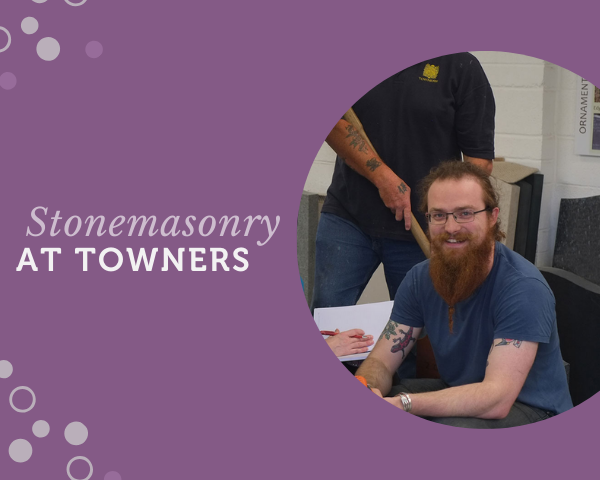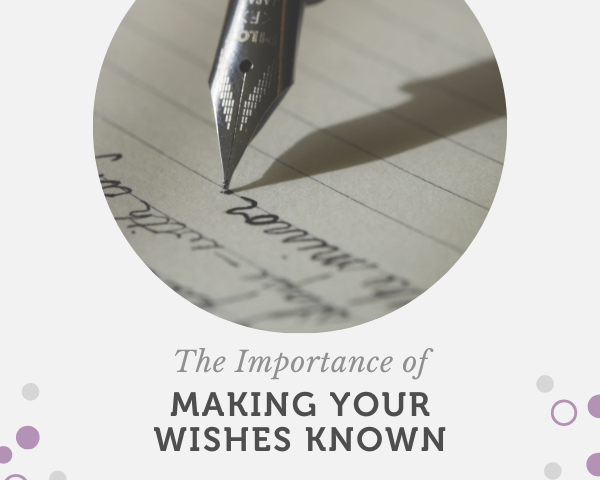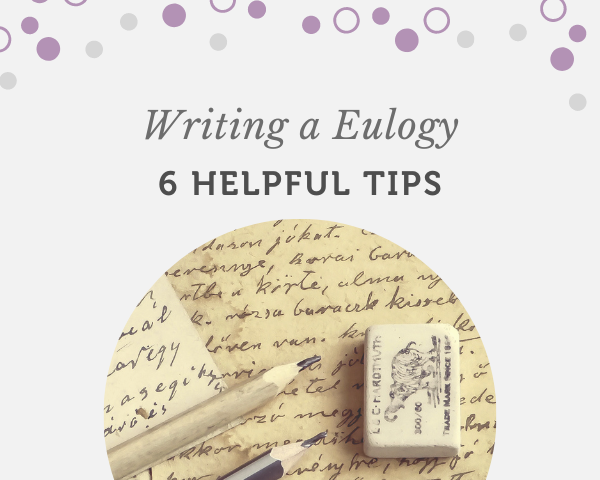What to Put on a Headstone
There is no right time to commission a memorial, the right time to come to us is when you feel able to start the journey. The process can be lengthy due to various factors i.e. the type of stone which needs to be quarried, shaped and shipped, whether the site is a burial or a cremation, the type and amount of lettering and embellishments etc. There is a lot to take in and many things to consider but the process doesn’t need to be a daunting one, our team of memorial experts, artisan letter cutters and accredited fixers are here to help guide you through the enquiry process. The more important aspects of a memorial aren’t necessarily the first considerations in the process, every decision feeds back into every other decision so to get the perfect memorial we need to start at the beginning.
Location
Different governing bodies (Church or Cemetery) will have different restrictions and requirements. Being aware of these regulations before deciding where a loved one will be laid to rest is very important as you may be surprised to find what you can and can’t have in particular areas.
In the case where a grave has already been purchased and a burial or interment has already taken place, or if there is an existing memorial, we can guide you towards an appropriate inscription or memorial.
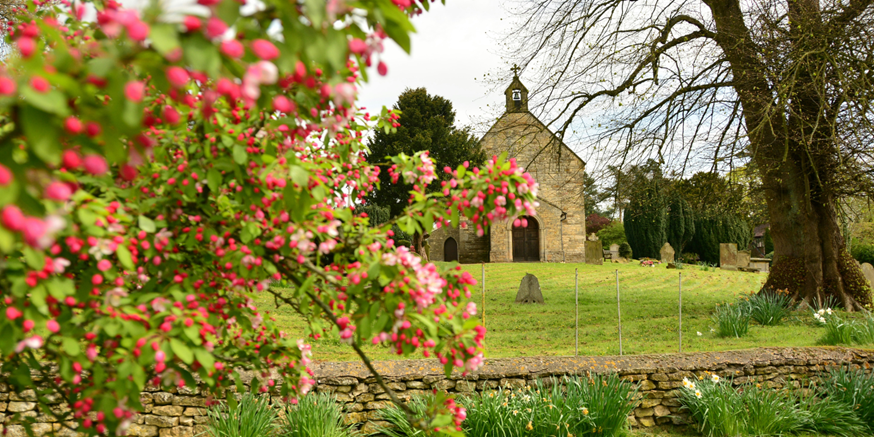
Churchyards have quite strict rules that are updated continually, so a lot of the time you can’t have what you want even if there are examples of it in the churchyard. This includes, but is not limited to: The type of memorial, the type of stone, any embellishments you might want, the inscription and the lettering finish. We can guide you to what is allowed and what is appropriate. Church memorials cannot be made of marble, coloured, dark or polished granites are not allowed, they cannot take the form of a cross, an Angel or a book, they cannot have lettering that is leaded, gilded, or even painted on certain stones. The inscriptions cannot refer directly to the deceased e.g. “She was our shining star.” The dates have to be written in a certain way and you are not allowed pet names, slang terms, embellishments such as ceramic photo plaques, football emblems, references to sports or hobbies e.g. fishing, football, motorbikes etc.
Cemeteries on the other hand are much more accommodating with their regulations and almost everything is permitted, within reason, given that it is not offensive. The different sections of different cemeteries have their own requirements, e.g. the thickness, height and width of stones on certain plots. But no restrictions on types of memorial stones, lettering or wording (again, within reason).
Type of Stone
There are a wide variety of memorial stones available but depending on where the grave is located it will change what you can have and what would be suitable. All stone is natural and will have variations in the patterns or finishes so anything you have seen before or will see in the workshop will be a good indicator of the final material but when it arrives in the workshop it may be slightly different.
Granites: Polished or honed granites are mostly on the lower cost end of the pricing scale with some coloured granites (Balmoral Red, Tropical Green, Blue Pearl) coming in closer to the top end. Granites are very hard-wearing and require minimum aftercare once the memorial has been installed.
Limestones and Sandstones: Carrara Marble, Nabresina, Celtic Limestone, Purbeck, Hopton Wood, Portland and York are more traditional stones for headstones and tablets. These materials require cleaning at least once a year to keep them looking fresh. They range from comparatively cheap (Carrara Marble) to a little bit more than the most expensive granites (Hopton Wood and Purbeck.) The price is however reflected in the quality of the stone as Hopton wood and Purbeck are two of the nicest-looking and most versatile memorial stones we can provide.
Slate: Wesh Slate and Cumbrian Green Slate are our premium stones and offer the finest finish and letter quality. Slate needs very little maintenance once it is out on-site and is able to withstand the weathering that limestones and sandstone are more vulnerable to. Cut slate has a naturally highlighted finish so it offers a good contrast without the need to paint lettering or design work. The slates aren’t always available in the sizes that we need but we can find out its availability upon enquiry.
Existing Memorials: We do lots of work for clients on memorials that are pre-existing, in these cases some families may want to add an inscription, add a new tablet or lettered vase block to the site or replace the memorial entirely. A lot of the time an old memorial can usually be brought back as good as new with a good clean and repaint of lettering.
Wording
While churchyards and cemeteries have certain guidelines for what is appropriate or required for an inscription, it doesn’t mean that you are locked into conventional wordings. Today there exists a much greater wealth of options to express who your loved one was and what made their life unique. A traditional inscription will consist of an introductory caption such as “In loving memory of…” followed by the Name, dates of birth and death, a short description of who they were “A wonderful mother, teacher and poet” and rounded off with an epitaph “Rest in peace.”

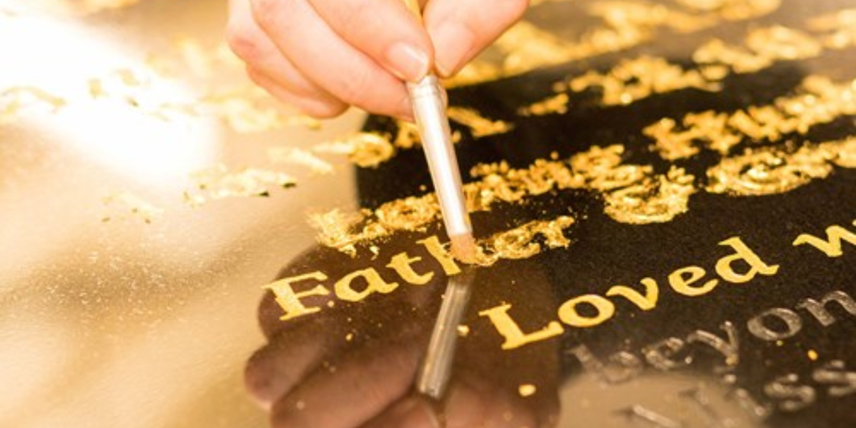
Most of those who come to us tend to follow this structure but will change parts to modernise or personalise their inscription. This can be tweaked or moved around depending on your wishes or those of your loved one. We are always encouraging the use of unique and personal wording for inscriptions but sometimes a simple and effective inscription is perfect for everyone.
Lettering Style
Existing memorials can usually be taken down and the inscriptions added to, matching letter style and format to the original as closely as possible. For new memorials the type of stone will affect the lettering options available, the two main types of lettering we can do at the workshop are hand-cut and shot-blasted, these have different benefits depending on the stone type.
Hand-cut lettering is done, as the name suggests, by hand with a chisel and dummy mallet. The lettering is drawn directly onto the stone surface and cut using a mallet and chisel to give the letter a “V” cut profile, this deep-cut lettering creates strong shadows inside the cut letter to help with legibility. This method is typically reserved for softer stones; the softer stones are usually slightly more expensive but the cost of hand cutting on a cheaper, harder granite can quickly make up the difference in cost. This process gives a bespoke finish and adds layers of tradition and individuality to the memorial. We can match any hand-cut lettering style you have seen either online or in person so if you see something you like please bring it to us.

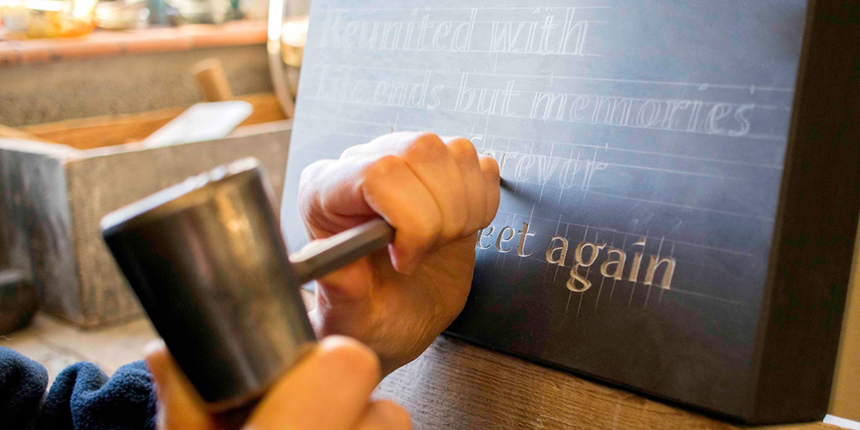
Shot-blasted lettering is designed on the computer and plotted out by a machine onto a rubber stencil which is then laid on the surface of the memorial, the lettering is picked out before it is checked and put into our blasting machine where high-pressure air and sintered aluminium oxide media (sinterball) is used to remove the exposed sections of the stone. This process gives the profile of the cut letters a flatter bottom and curved sides making a compressed “U” shape in contrast to the “V” shape of the hand-cut letter. This process is ideal for granite as it is quicker, lower cost and easily customisable. Using the computer, we can design memorials to include various features such as crosses, flowers, animals, fishing rods, football emblems, motorbikes etc. almost anything really. This goes for lettering styles as well, almost anything can be matched and what can’t be matched 100% can be designed to fit as well as possible.
Letter Finishes
Many different lettering finishes are available for both hand-cut and shot-blasted lettering, from gilding in gold leaf to flush lead filled to debossed/reverse blasted, there is a lot to choose from but the stone itself will mostly dictate what styles are more effective and appropriate.
Darker stones like Welsh slate or black and dark grey granites offer the best contrast with gold leaf, white or silver paint. Unpainted letters or debossed/reverse blasted letters are also very successful on darker stones and need zero maintenance whereas other applied finishes like paint and gold leaf will require attention in the future.
Lighter coloured stones such as Carrara Marble, Nabresina and Portland, unless the lettering is cut very large and very deep, will require paint in order to be readable in all weathers. However, restrictions in churchyards mean that Portland, Hopton Wood and York cannot have painted lettering and Marble is not permitted.
Environmental Concerns
Lead, due to its malleability, density and durability, has been used throughout history in everything from plumbing and cable insulation to paints and organ pipes. As with many things used in the past, these benefits came with a largely unseen and delayed impact on both humans and our environment.
Today it is no secret that lead, like other heavy metals, seeps into ecosystems and causes compounding damage on plants, people and wildlife. This means its uses today have widely been switched to safer alternatives such as debossed/reverse blasted lettering which is a much more versatile and long-lasting method.
Cost
For many people, cost will be a limiting factor, memorials are expensive to produce and work on but this does not mean a lower cost option would be settling for a lesser memorial as a result. We can guide clients through the process to find affordable options. Visit our Stonemasonry page to get in touch.


